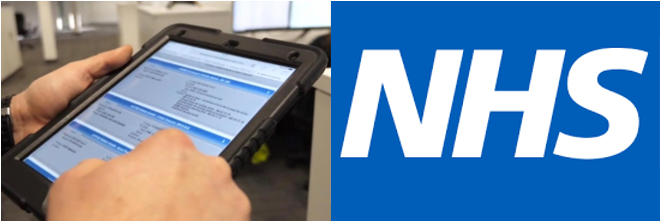
It is estimated that the NHS may take a year to fully recover from the pandemic. Due to the coronavirus, millions of people avoided going to the hospital despite needing treatment. Doctors postponed more than two million operations that were deemed “non-urgent” to free up beds for coronavirus patients.
The NHS must prepare to treat patients with delayed care needs once normal services resume. However, this will be challenging because many NHS resources will remain focused on treating coronavirus patients. Therefore, private hospitals may be required to aid the NHS in dealing with the backlog of people needing care.
James Frost, Head of Service and Maintenance at Artic Building Services, discusses what the future requirements of Facilities Management could look like for the NHS…
As clinics and other services begin to reopen, staff and patient safety will be of crucial importance. The NHS must ensure PPE and coronavirus testing kits are readily available, and hospitals undertake enhanced cleaning to prevent the spread of the virus.
The coronavirus has forced hospitals to adopt new technology such as online appointments and video consultations. The use of this technology may continue after the pandemic to help reduce the burgeoning pressure upon the NHS.
The Royal College of Nursing estimates that over 7,000 retired nurses returned to help the NHS in its time of need. However, once the pandemic is over, most of these staff will likely retire again, which could lead to staff shortages. The NHS may also struggle to attract new staff if it cannot guarantee their safety.
Not only, is the working environment set to change. The management of facilities and working practices for engineers will be adapted to meet the demands of the ‘new normal’. In cases where lone working is a risk, will engineers be forced to work in pairs? In high risk environments, will sufficient PPE be available? This is yet another example where hospitals will adopt new technology and will become, if not already in place, an integral part of delivering services at a distance. To keep on top of compliance without compromising the quality of service, it will be an advantage being able to monitor and input data remotely from desktops and mobiles. At a time where workplace safety is at an all-time high, the data driven from CAFM systems will be crucial to provide comfort and ease anxiety for both staff and authorities.
Energy Use within the NHS
The coronavirus pandemic has collided with the climate change emergency, demanding the solutions to both crises be combined in one environmentally friendly response. The NHS must significantly reduce energy usage in line with the UK’s goal to achieve net-zero carbon emissions by 2050.
The Committee on Climate Change found that the NHS is responsible for 5.4% of the UK’s total carbon emissions. This is not much lower than emissions produced by the aviation industry (6.5%).
NHS chief executive Sir Simon Stevens said that the NHS is working towards an evidence-based date for the NHS to reach net-zero carbon. A programme called ‘for a greener NHS’ has launched which aims to unite the NHS in the fight to reduce its impact on the environment.
One reason the NHS’s carbon footprint is so high is due to travel to and from hospitals. A priority moving forward will be the improvement of transport between NHS sites. By improving public transport and reducing emissions from delivery vehicles, overall carbon emissions will fall. Further reductions could be made if hospitals continue to use technology such as video consultations where possible, eliminating the need to travel to an NHS site.
Many medical devices currently used within hospitals are made of plastic and can only be used once, which contributes to the NHS’s overall carbon emissions. Investment in reusable medical devices to reduce carbon emissions must be balanced with the need to ensure an aseptic environment.
The NHS could also see a shift to further mobile working rather than having site-based staff. This will be possible if smart buildings and the optimisation of BMS systems are implemented where not already. CAFM systems can gain control of the facilities they support quickly and efficiently. Service providers working in partnership with the NHS will be able to streamline service delivery and ensure engineers can deliver in a safe and timely fashion, keeping in touch with staff.
The technology required to significantly reduce the NHS’s energy emissions is available, but the biggest challenge for NHS facilities managers is funding. Without adequate funding, technology such as Building Management Systems, CAFM and energy-efficient HVAC systems cannot be installed.
HVAC Systems Within Hospitals
Many environmentalists believe HVAC systems must be eradicated to achieve a net-zero carbon future. However, hospitals have a genuine need for HVAC that cannot be ignored, especially since 2020 is expected to be the warmest year in UK history.
Air conditioning provides comfort to patients, improving recovery times, and leading to a shorter stay in hospital. Overheating is a serious issue within hospitals which would be made exponentially worse without air conditioning.
HVAC systems ventilate the hospital, reducing the risk of infectious particles hanging in the air. HVAC systems help to maintain a germ-free environment that contributes to the well-being of patients and helps prevent the spread of diseases.
Healthcare equipment is often sensitive to temperature and humidity levels, requiring specific conditions to function as intended. This creates the need for HVAC systems which allow staff to modify temperatures as needed.
NHS facilities managers should measure and monitor the effectiveness of their heating and cooling systems. B&ES Head of Sustainability, David Frise argues that optimising the way air is supplied within the NHS could reduce annual carbon emissions by 80 tonnes. This highlights that HVAC systems have a future within the NHS, provided reductions in energy consumption are made.
Summary
With a backlog of delayed care patients, numerous coronavirus patients, and staff shortages, the NHS will be hard-pressed to treat everyone promptly. PPE and thorough cleaning will be required for the foreseeable to ensure staff and patient safety. The ‘greener NHS’ programme demonstrates a move in the right direction towards fighting climate change.
Facilities managers are responsible for improving energy-efficiency within their hospital. Optimising HVAC systems is a key way facilities managers can reduce their hospital’s carbon emissions. Funding appears to be the biggest limitation preventing hospitals from investing in technology that would reduce energy usage. Although improving HVAC systems may require an initial investment, an energy-efficient system will result in long-term cost savings. As new technologies become more affordable, the NHS may be able to reinvent itself as a sustainable healthcare service and achieve its net-zero target.
Share This Story!
If you're looking to partner with Artic Building, then please complete the Working With Artic form here.
Do you have an upcoming project or tender? Then please complete the form below.

